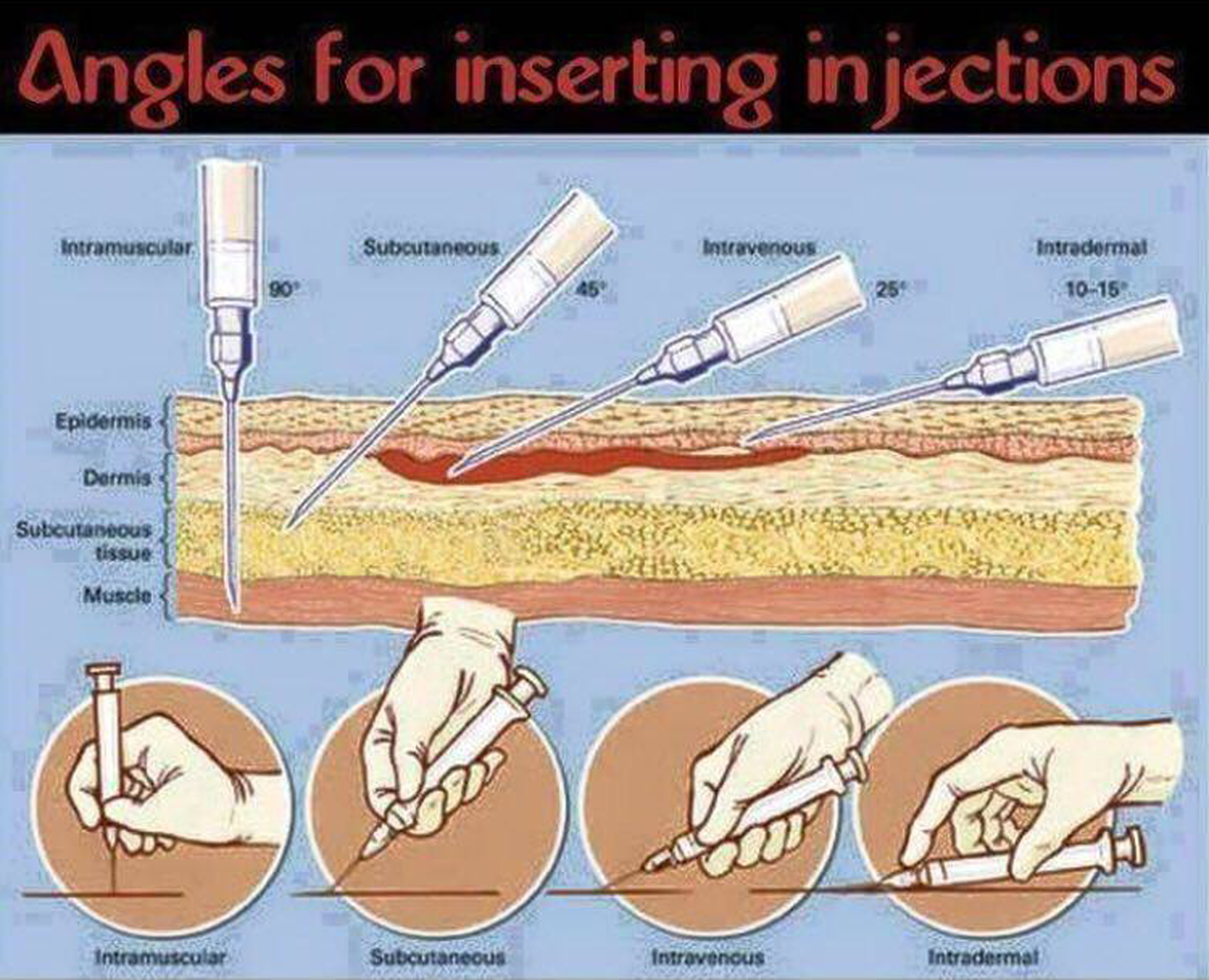Farm & Ranch
The Breakdown on Injection Sites

By Jessica Crabtree and Dr. Jered Harlan
If you are a livestock producer or a person responsible for the care of animals, it is essential you know the proper injection sites on the animals and significance behind each.
The various methods are important so that the animal receives the proper dose of medicine and it be effective. Also injection sites ensure the animal is receiving the best care possible. Learning these locations will alleviate any damage to the tissue and ensure safe food supply.
There are common injection spots and less common. Most common include oral, insufflation, intravenous, subcutaneous and intramuscular. Oral, with the abbreviation “PO, per-os,” injection placement is in the mouth. Insufflation, however, doesn’t have an abbreviation but means the injection placement is through the nose into the nasal passage. Intravenous is typically seen abbreviated “IV” and means the injection placement is into the bloodstream through a vein. Subcutaneous is seen abbreviated “SC or SQ” and means the injection placement is under the skin. Lastly, intramuscular in abbreviated by “IM” and means the injection placement is into the muscle.
Less common injection sites, but still important to know and navigate through, are gavagel, rectal, intraperitoneal, intradermal, intrathecal and intracranial. Gavagel has no abbreviation and has an injection placement meaning in the stomach via a tube inserted in the mouth and commonly used to release bloat or feed a newborn animal colostrum.
To read more pick up a copy of the February 2017 NTFR issue. To subscribe call 940-872-5922.
Farm & Ranch
Hazards of Backyard Poultry

By Barry Whitworth, DVM
Having backyard poultry is a popular agriculture enterprise. According to the United States Department of Agriculture, 0.8 percent of all households in the United States have chickens. People keep chickens for a variety of reasons with table eggs being one of the more common reasons.
Unfortunately, some of these poultry producers are not aware of the hazards that come with keeping poultry because many times they carry pathogens but appear healthy.
Chickens are carriers of several zoonotic diseases. These are diseases that can be passed from animals to humans. According to a recent survey in Pennsylvania, a majority of backyard poultry producers were aware of the dangers of avian influenza. However, this study also revealed that far fewer producers were aware of the risk of possible exposure to Salmonella and Campylobacter.
The lack of knowledge about the hazards of raising poultry likely contributes to the continued issues of Salmonella outbreaks associated with backyard poultry. In 2023, the Centers for Disease Control and Prevention reported 1,072 illnesses of Salmonella linked to backyard poultry, and 272 of those patients required hospitalization. Oklahoma reported 43 individuals with the disease.
To read more, pick up a copy of the April issue of NTFR magazine. To subscribe by mail, call 940-872-5922.
Farm & Ranch
Ag Elsewhere: Wyoming

By Tressa Lawrence
Babies are tucked away in every nook and cranny. Many ranchers across Wyoming have baby animals popping up all over this time of year.
Farm & Ranch
Ag Elsewhere: Montana

By Lindsey Monk
Another load of grain in to keep feeding the calves until the green grass can really start popping.
-

 Country Lifestyles1 year ago
Country Lifestyles1 year agoScott & Stacey Schumacher: A Growth Mindset
-

 Equine7 months ago
Equine7 months agoThe Will to Win
-

 Country Lifestyles7 years ago
Country Lifestyles7 years agoStyle Your Profile – What your style cowboy hat says about you and new trends in 2017
-

 Country Lifestyles4 years ago
Country Lifestyles4 years agoAmber Crawford, Breakaway Roper
-

 HOME7 years ago
HOME7 years agoGrazing North Texas – Wilman Lovegrass
-

 Country Lifestyles7 years ago
Country Lifestyles7 years agoDecember 2016 Profile, Rusty Riddle – The Riddle Way
-

 Country Lifestyles8 years ago
Country Lifestyles8 years agoJune 2016 Profile – The man behind the mic: Bob Tallman
-

 Outdoor9 years ago
Outdoor9 years agoButtercup or Primrose?






